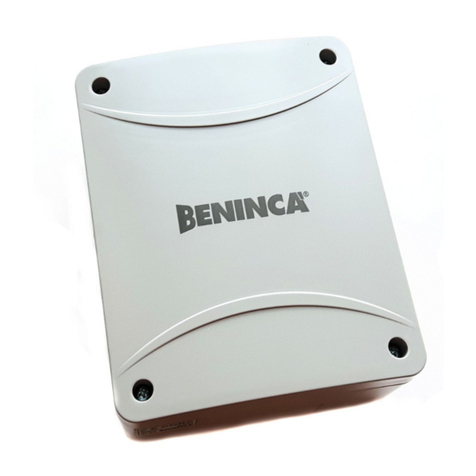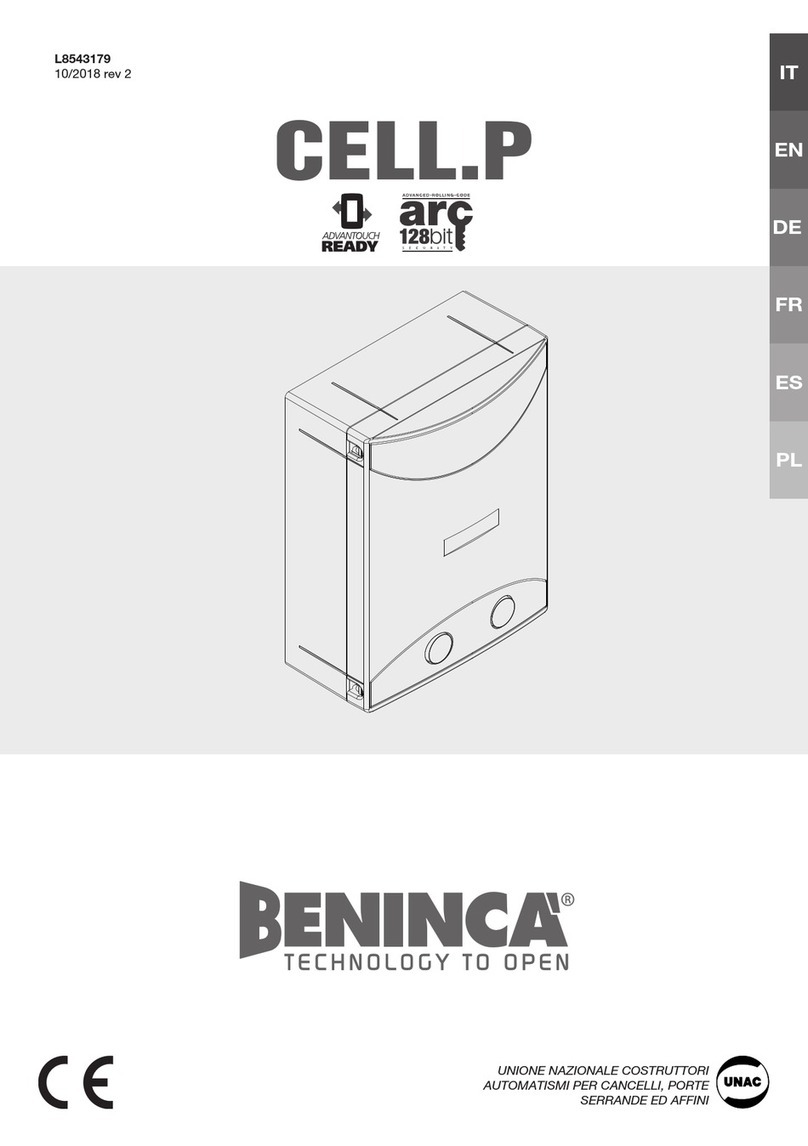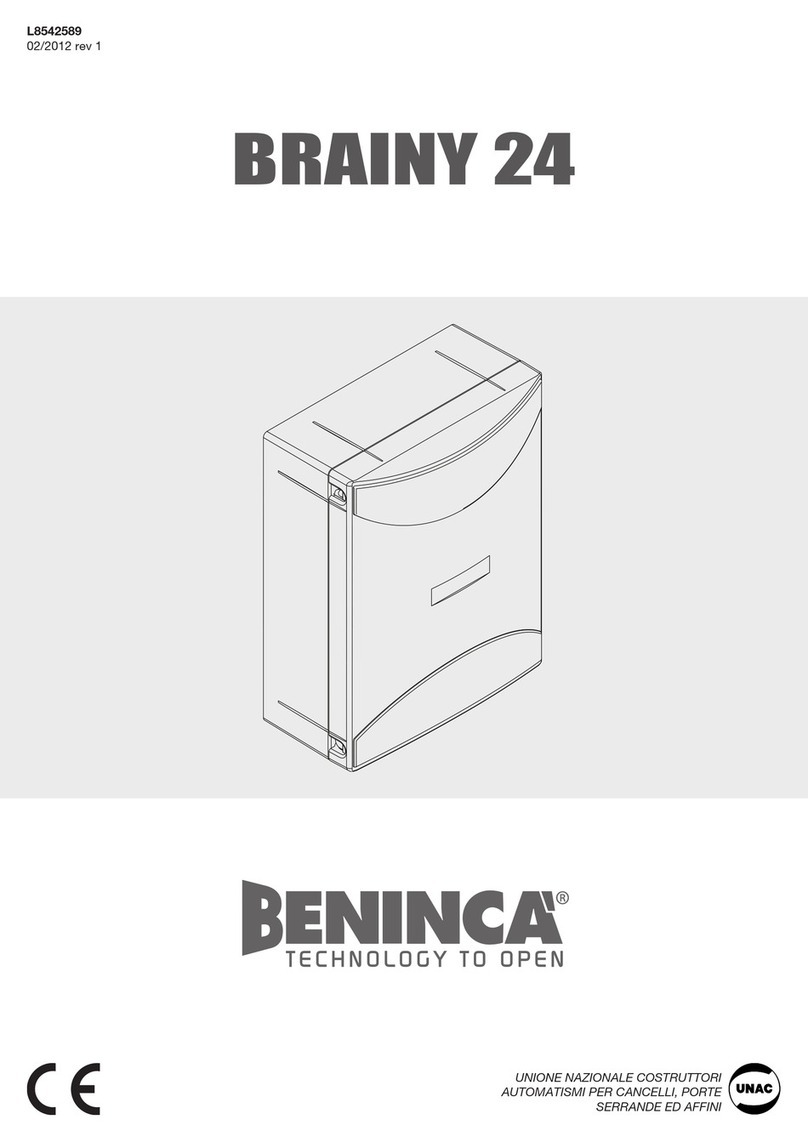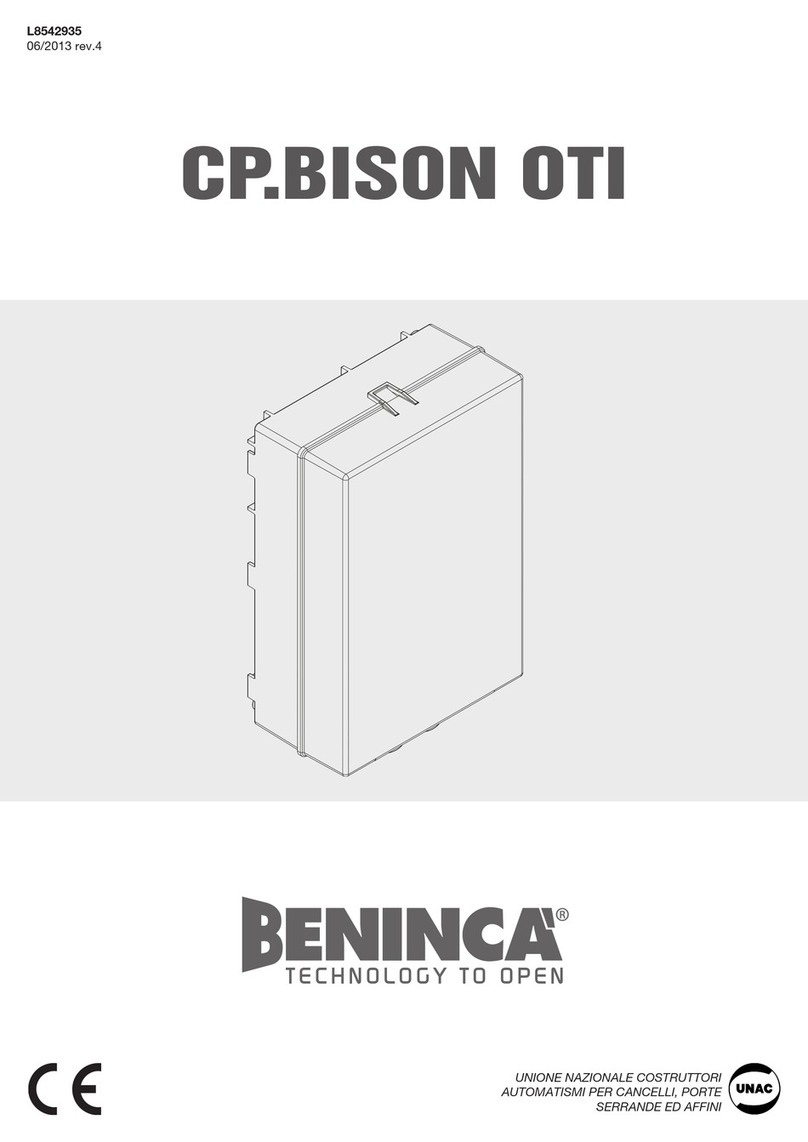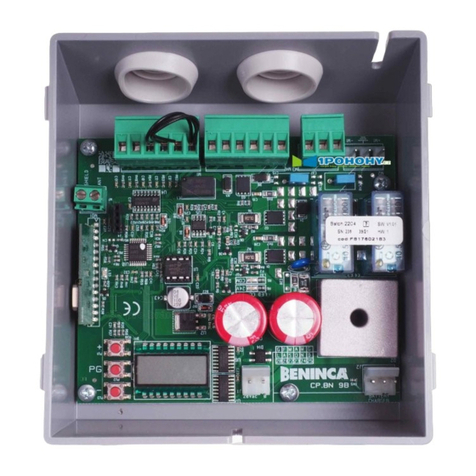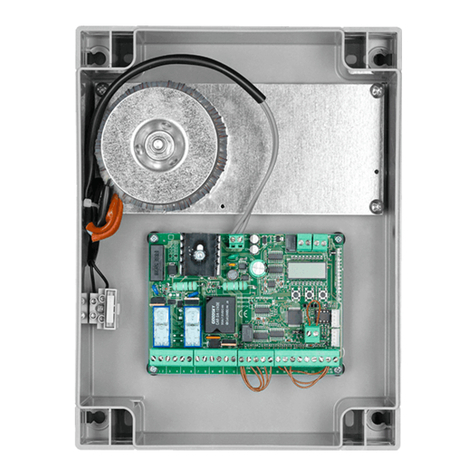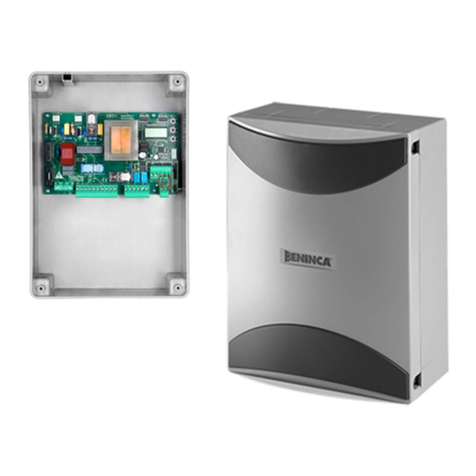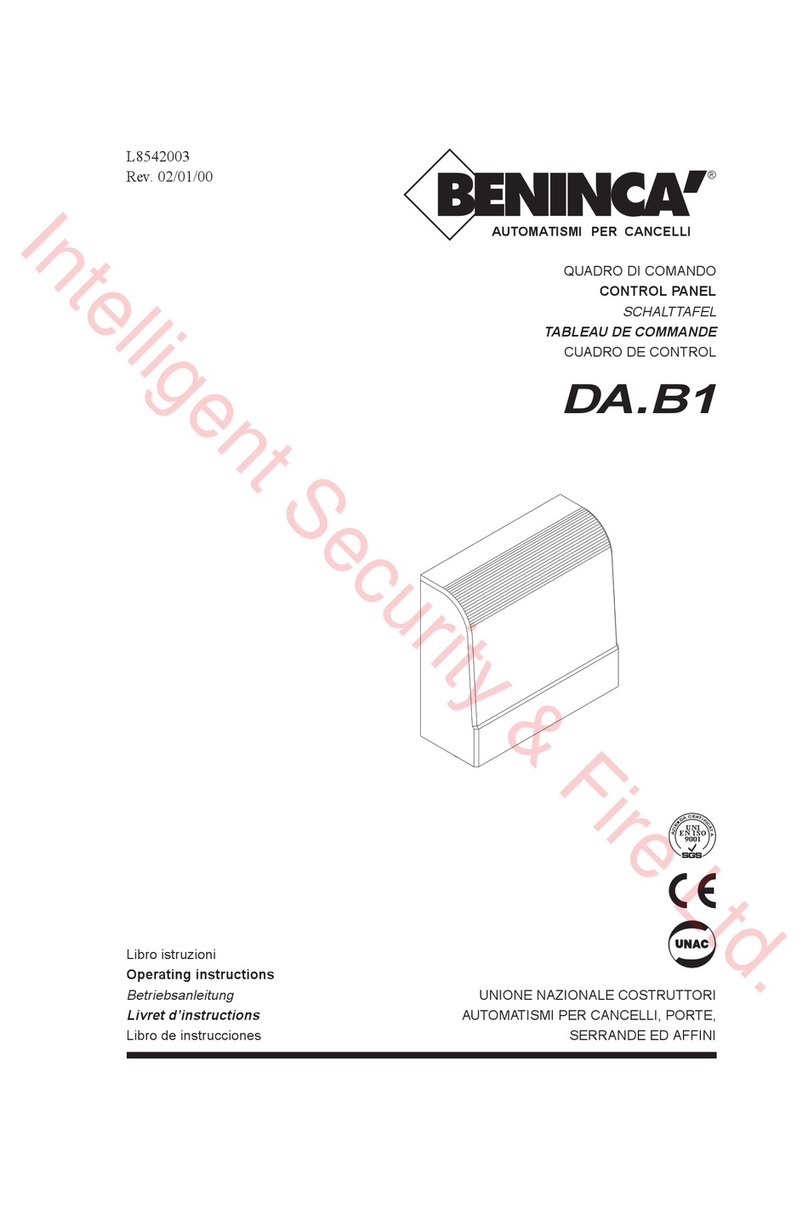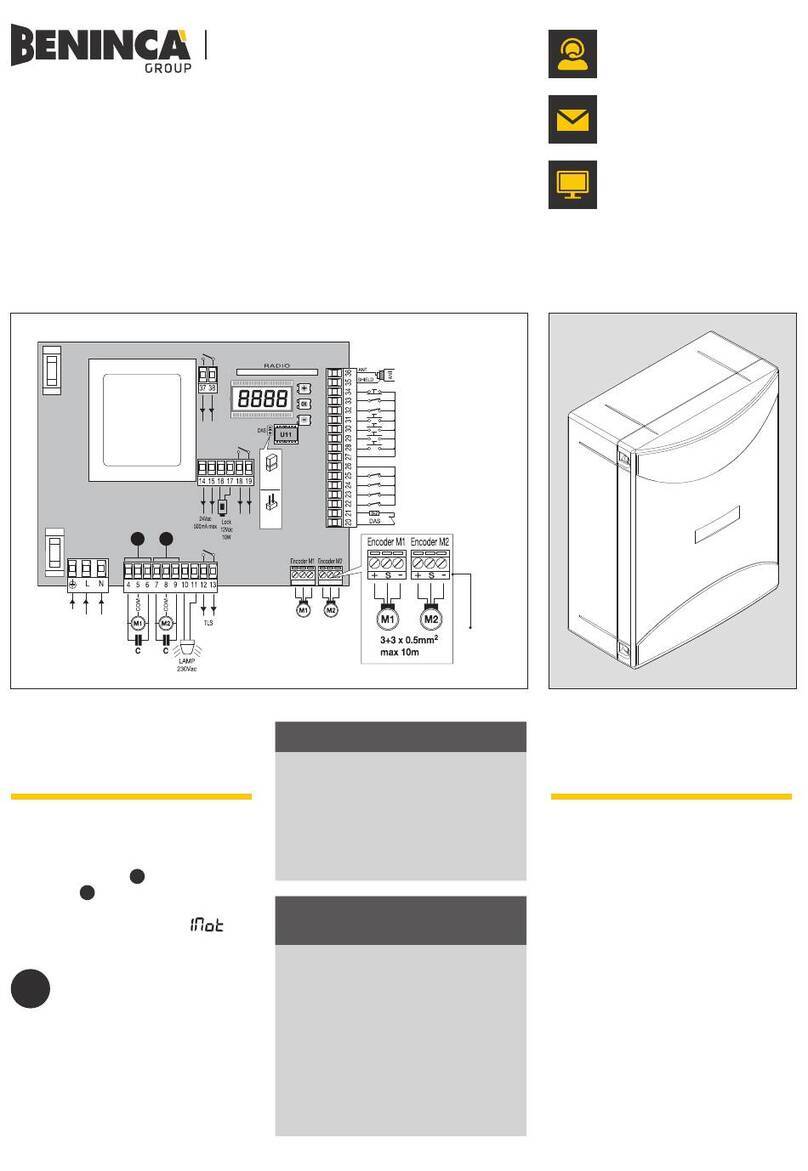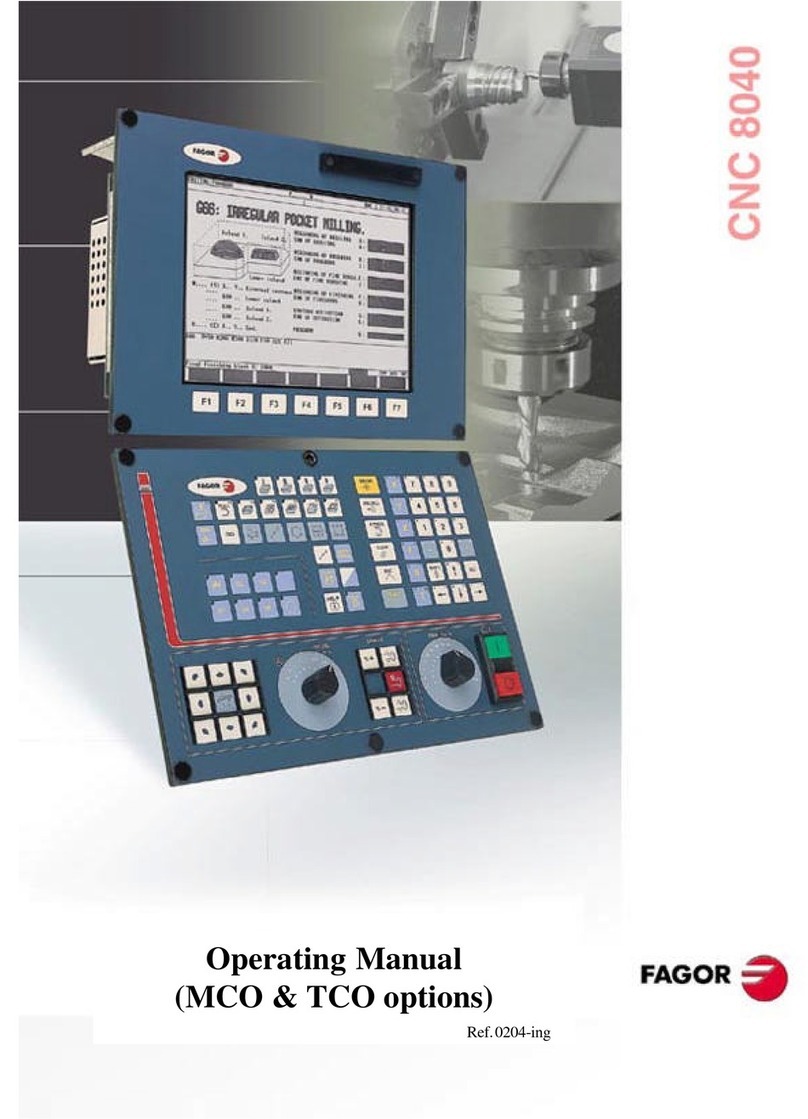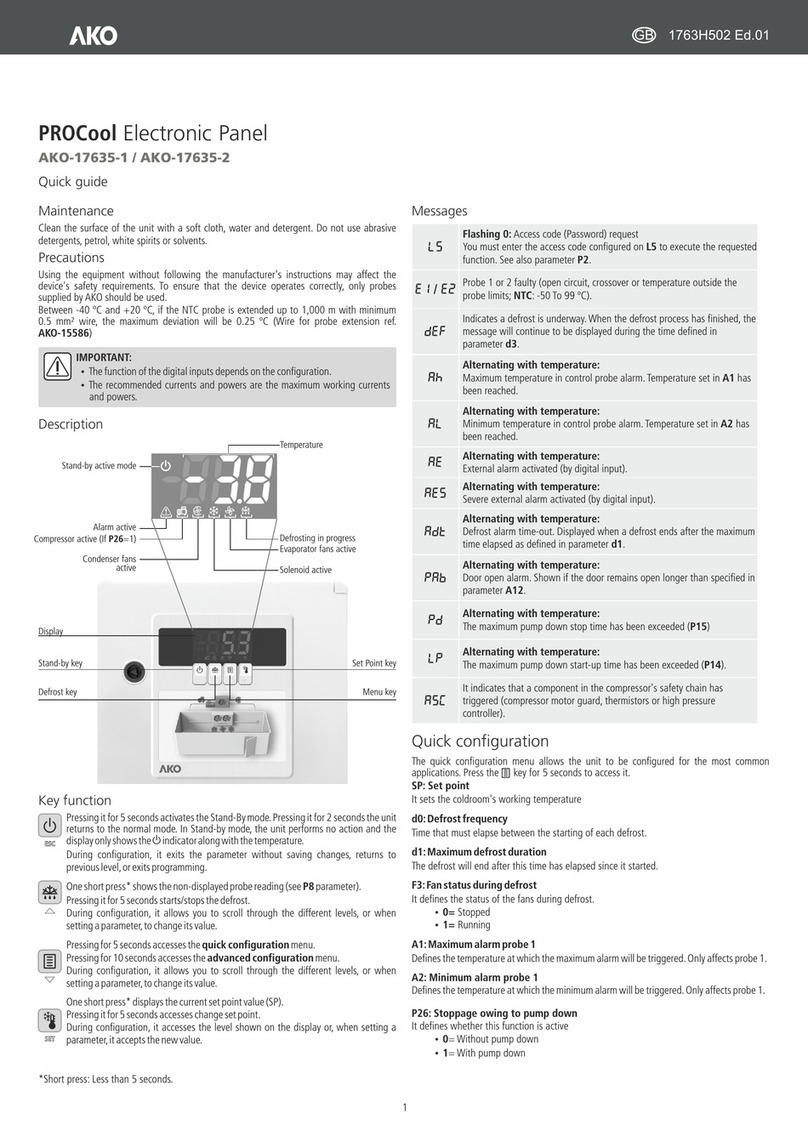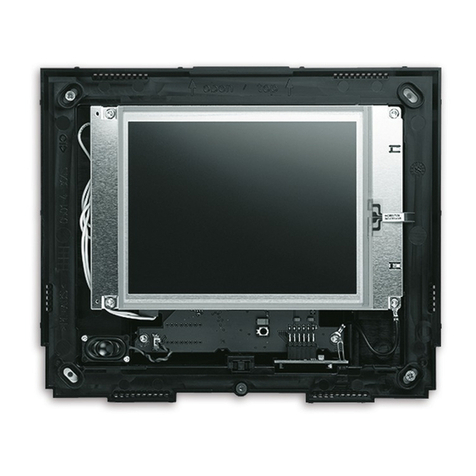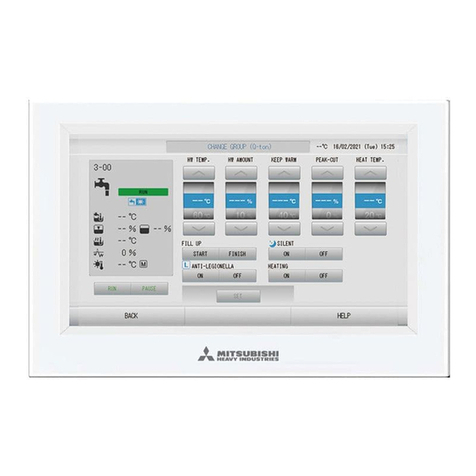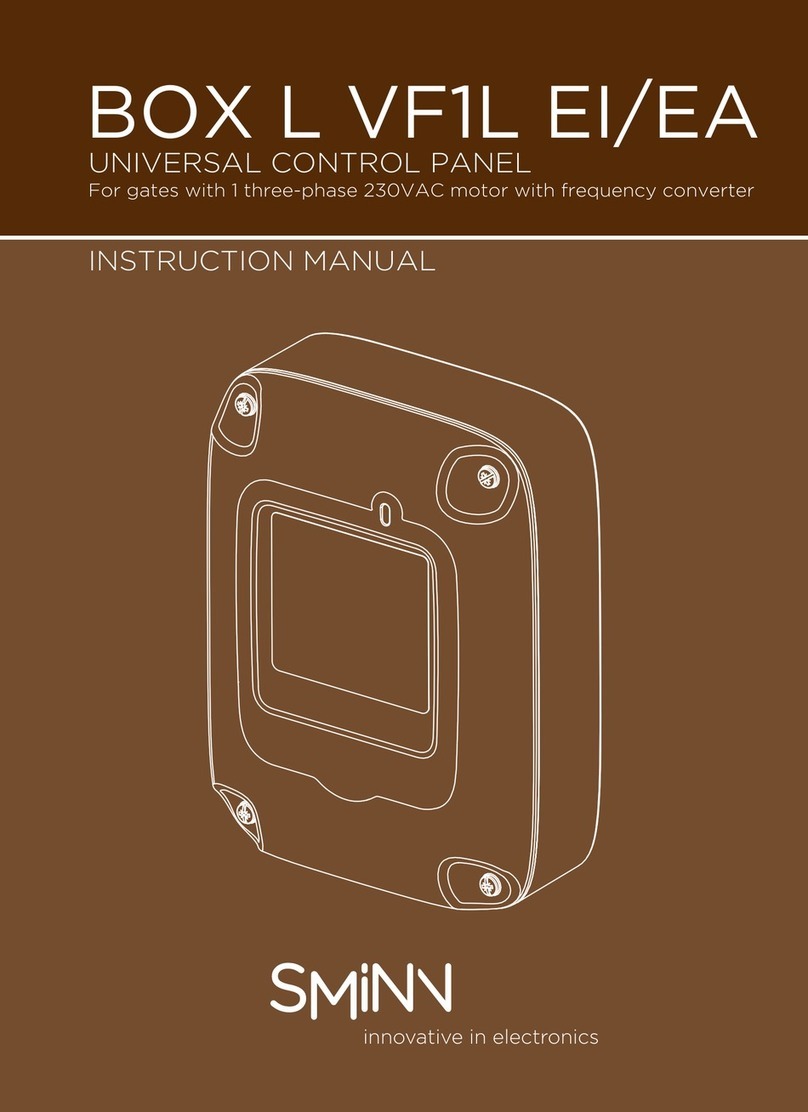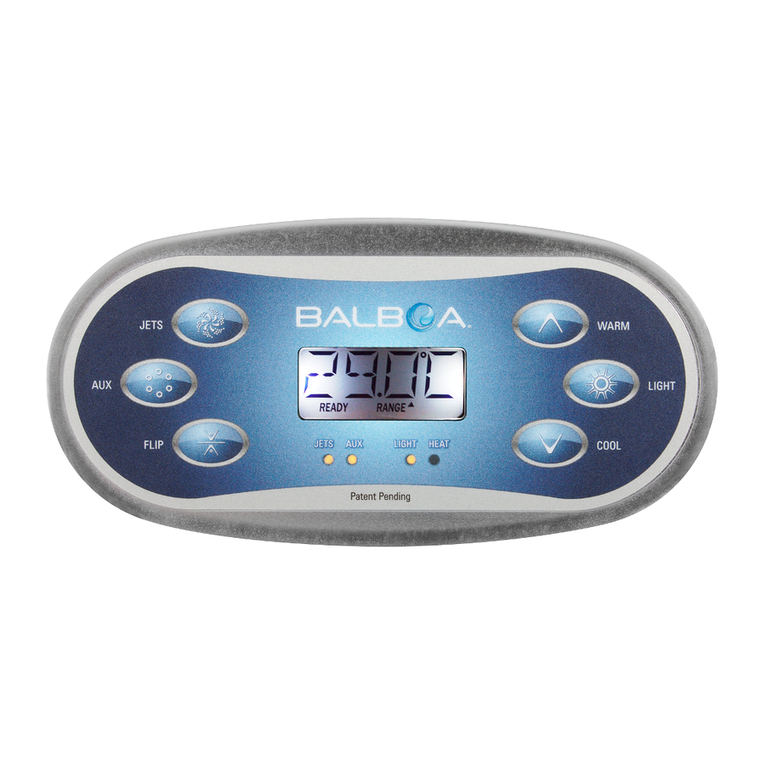
9
IT
ped
Selezionando questa funzione la ricevente si pone in attesa (Push) di un codice trasmettitore da assegnare alla
funzione pedonale.
Premere il tasto del trasmettitore che si intende assegnare a questa funzione.
Se il codice è valido, viene memorizzato e viene visualizzato il messaggio OK
Se il codice non è valido, viene visualizzato il messaggio Err.
CLR
Selezionando questa funzione la ricevente si pone in attesa (Push) di un codice trasmettitore da cancellare dalla
memoria.
Se il codice è valido, viene cancellato e viene visualizzato il messaggio OK
Se il codice non è valido o non è presente in memoria, viene visualizzato il messaggio Err
RTR
Cancella completamente la memoria della ricevente. Viene richiesta conferma dell’operazione.
Selezionando questa funzione la ricevente si pone in attesa (Push) di un una nuova pressione di PGM a conferma
dell’operazione.
A fine cancellazione viene visualizzato il messaggio OK
NUMERO MANOVRE (Nman)
Visualizza il numero di cicli completi (apre+chiude) effettuate dall’automazione.
La prima pressione del pulsante <PG>, visualizza le prime 4 cifre, la seconda pressione le ultime 4.
Es. <PG> 0012 >>> <PG> 3456: effettuati 123.456 cicli.
RESET (RES)
RESET della centrale. ATTENZIONE!: Riporta la centrale ai valori di default.
La prima pressione del pulsante <PG> provoca il lampeggio della scritta RES, una ulteriore pressione del pulsante <PG> effettua
il reset della centrale.
Nota: Non vengono cancellati i trasmettitori dalla ricevente, ne la posizione e la corsa dell’anta.
PASSWORD DI ACCESSO (CODE)
Consente di inserire un codice di protezione di accesso alla programmazione della centrale.
E’ possibile inserire un codice alfanumerico di quattro caratteri utilizzando i numeri da 0 a 9 e le lettere A-B-C-D-E-F.
Il valore di default è 0000 (quattro zeri) e indica l’assenza di codice di protezione.
Sostituendo il codice 0000 con qualsiasi altro codice si abilita la protezione della centrale, impedendo l’accesso a tutti i menu. Se
si desidera inserire un codice di protezione, procedere come segue:
- selezionare il menu Code e premere OK.
- viene visualizzato il codice 0000, anche nel caso sia già stato inserito in precedenza un codice di protezione.
- con i tasti + e - si può variare il valore del carattere lampeggiante.
- con il tasto OK si conferma il carattere lampeggiante e si passa al successivo.
- dopo aver inserito i 4 caratteri compera un messaggio di conferma “CONF”.
- dopo alcuni secondi viene ri-visualizzato il codice 0000
- è necessario riconfermare il codice di protezione precedentemente inserito, in modo da evitare inserimenti involontari.
Se il codice corrisponde al precedente, viene visualizzato un messaggio di conferma “OK”
La centrale esce automaticamente dalla fase di programmazione, e per accedere nuovamente ai menu sarà necessario inserire
il codice di protezione memorizzato.
In qualsiasi momento è possibile annullare l’operazione di inserimento del codice, premendo contemporaneamente i tasti + e -. Una
volta inserita la password è possibile operare sulla centrale, entrando ed uscendo dalla programmazione per un tempo di circa 10
minuti, in modo da consentire le operazioni di regolazione e test delle funzioni.
IMPORTANTE: ANNOTARE il codice di protezione e CONSERVARLO IN LUOGO SICURO per future manutenzio-
ni. Per rimuovere un codice da una centrale protetta è sufficente riportare il codice al valore di default 0000.
IN CASO DI SMARRIMENTO DEL CODICE È NECESSARIO RIVOLGERSI ALL’ASSITENZA
TECNICA AUTORIZZATA, PER IL RESET TOTALE DELLA CENTRALE.
CENTRALE DI COMANDO COMPATIBILE ARC
IMPORTANTE, LEGGERE CON ATTENZIONE:
Il ricevitore radio presente in questo prodotto è compatibile con i nuovi trasmettitori ARC (Advanced Rolling Code) i quali, grazie alla
codifica a 128 bit, garantiscono una superiore sicurezza anticopiatura.
La memorizzazione dei nuovi trasmettitori ARC è del tutto analoga a quella dei normali trasmettitori Rolling Code con codifica HCS, ma
occorre tenere presente che:
1) Trasmettitori ARC e Rolling Code HCS non possono essere memorizzati in una singola ricevente.
2) Il primo trasmettitore memorizzato stabilisce la tipologia di trasmettitori da utilizzare in seguito. Se il primo trasmettitore memorizzato
è ARC, non sarà possibile memorizzare trasmettitori Rolling Code HCS, e viceversa.
3) I trasmettitori a codice fisso possono essere utilizzati solo in abbinamento ai trasmettitori Rolling Code HCS, portando la logica CVAR
in OFF. Non sono quindi utilizzabili in abbinamento ai trasmettitori ARC. Se il primo trasmettitore Rolling Code memorizzato è un ARC
la logica CVAR è inifluente.
4) Se si desidera cambiare tipologia di trasmettitori è necessario procedere con un reset della ricevente.
